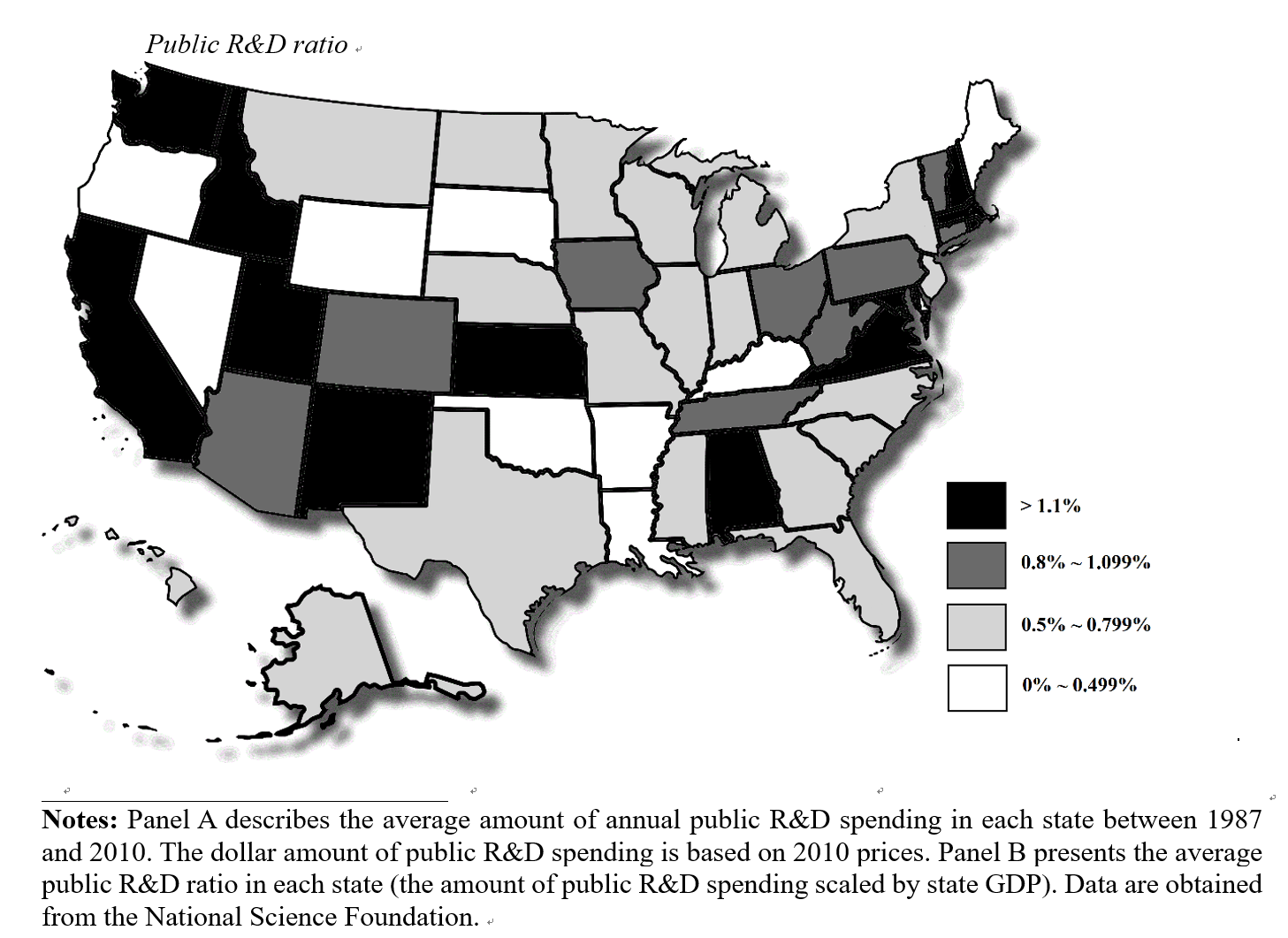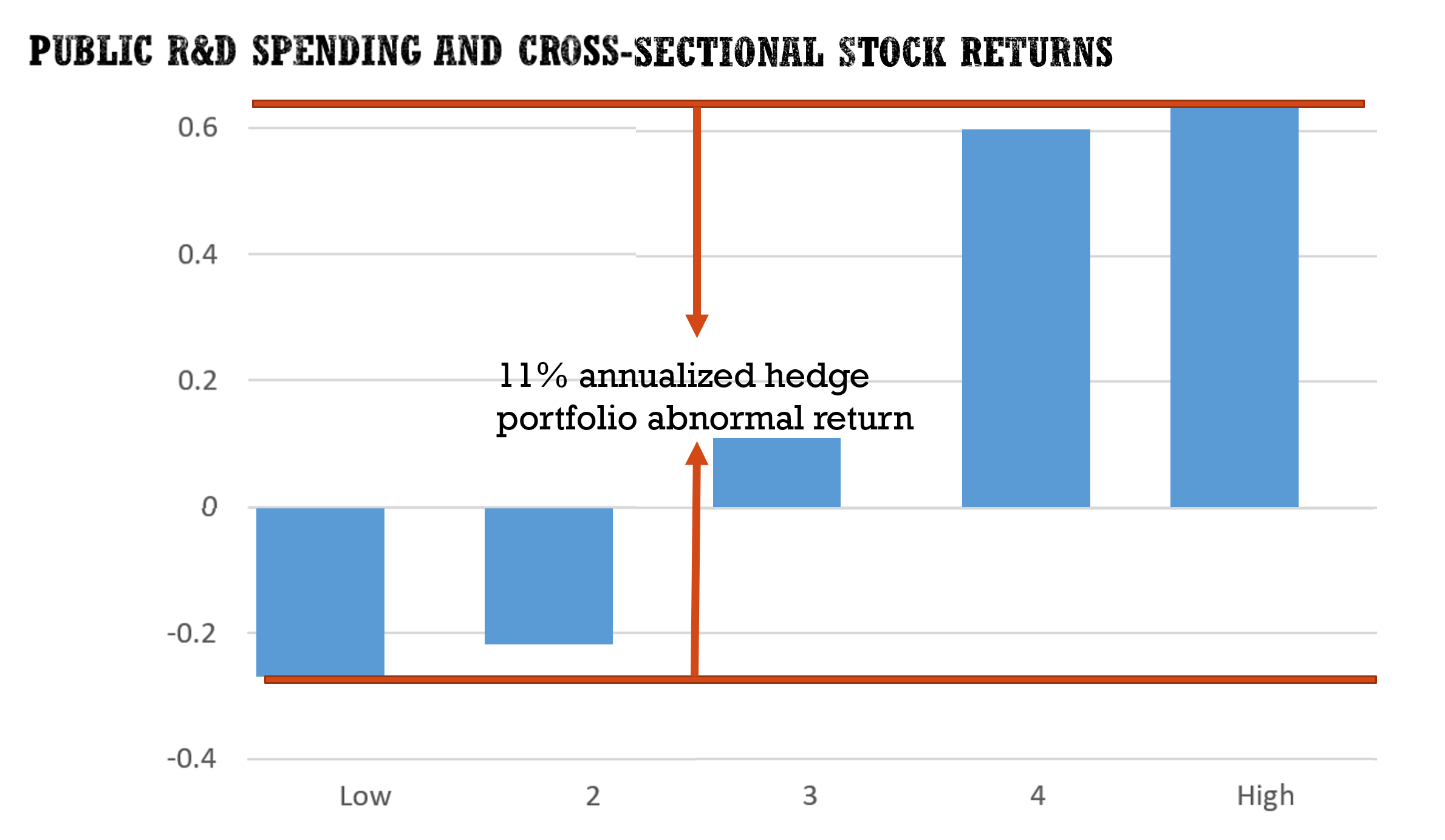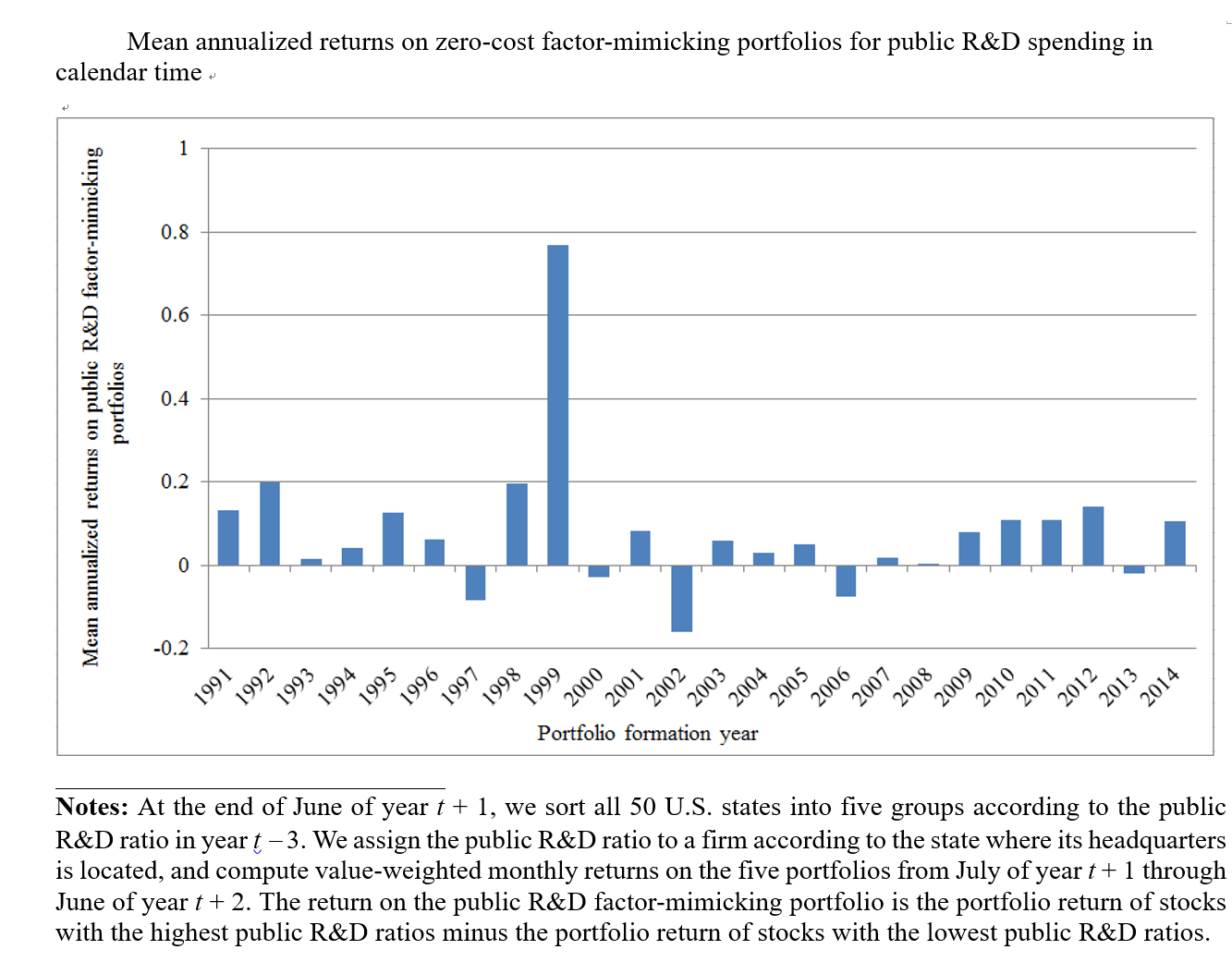| Technical Name | Public R&D Spending and Cross-Sectional Stock Returns | ||
|---|---|---|---|
| Project Operator | National Taiwan University | ||
| Project Host | 王衍智 | ||
| Summary | We examine how public R&D spending influences cross-sectional stock returns. According to National Science Foundation, public R&D spending in 2017 is about 171 billion dollars, occupied 30% of US aggregate R&D spending. Our project studies how public R&D spending affects the capital market performance and related policy implications. |
||
| Scientific Breakthrough | Using US data between 1987 and 2010, we find that firms located in states with more public R&D spending earn higher stock returns. A long-short value-weighted portfolio constructed by public R&D spending earns a monthly abnormal return of 0.9%, which is equivalent to 11% annualized abnormal return. Compared with Fama and French's factor-mimicking portfolios for size (SMB), book-to-market equity (HML), operating profitability (RMW), and asset growth (CMA), Sharpe ratio upon our investment strategy is quantitatively similar to that of traditional factor-mimicking portfolios. Mixing our strategy and those traditional ones, we can improve the investment efficient due to the fact that correlation coefficients between them are below 0.4. |
||
| Industrial Applicability | The industrial applications of this strategy are threefold: industrial policy, fund companies and the use of non-profit organization. First, whether a country's industrial policy could increase public R&D expenditures and to what extent the public R&D may benefit the society are important policy issues. Our research provides an academic basis for why the government should increase investment in basic scientific research. Secondly, information about public R&D can be used by investors, particularly mutual funds and hedge funds, that can use this portfolio strategy to generate significant profits. Finally, non-profit organizations, such as university endowment and pension funds, can follow this strategy to profit. |
||
| Keyword | Public R&D Portfolio strategy Hedge Stock returns Alpha value Sharpe ratio Mutual fund Hedge fund Pension fund University endowment | ||
- yangsen3183@ntu.edu.tw
other people also saw







